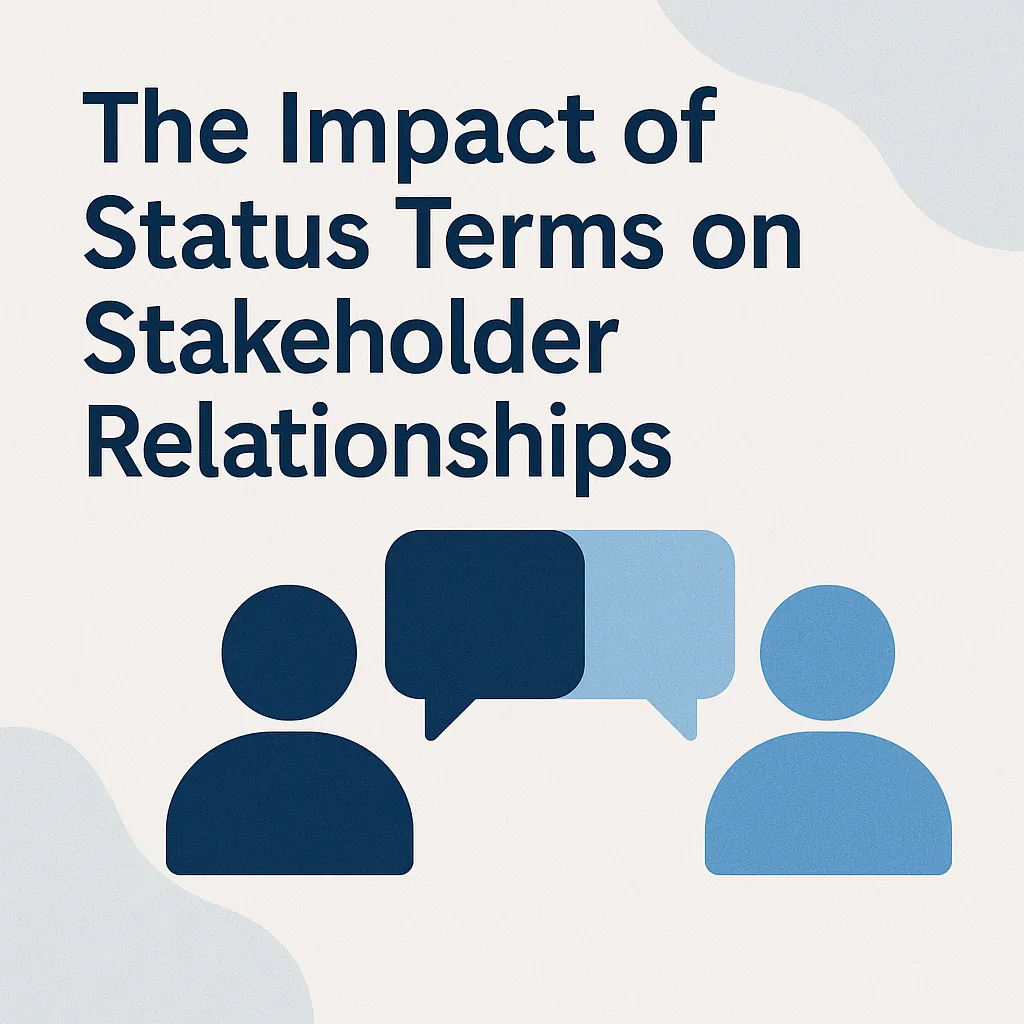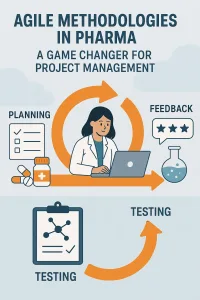Introduction
The clarity and precision of communication play a pivotal role in fostering successful stakeholder relationships. One critical aspect of this communication is the use of project management status terms. These terms serve as a common language that helps project managers convey the current state of a project, ensuring that all stakeholders are aligned and informed.
Defining Project Management Status Terms
Project management status terms refer to the specific language and terminology used to describe the progress, challenges, and overall health of a project. These terms can include phrases like “on track,” “at risk,” “delayed,” or “completed.” By standardizing these terms, project managers can provide stakeholders with a clear understanding of where the project stands at any given moment. This clarity is essential for effective decision-making and resource allocation, as it allows stakeholders to grasp the project’s trajectory and any potential issues that may arise.
The Importance of Effective Communication in Project Management
Effective communication is the backbone of successful project management. It ensures that all parties involved—project managers, team members, and stakeholders—are on the same page regarding project goals, timelines, and expectations. When project managers utilize clear and consistent status terms, they enhance transparency and facilitate better decision-making. This not only helps in managing expectations but also in building trust among stakeholders, as they feel informed and engaged throughout the project’s lifecycle. Moreover, effective communication can lead to improved project outcomes, as stakeholders are more likely to support initiatives when they understand the project’s status and challenges.
Stakeholder Relationships and Their Relevance
Stakeholders are individuals or groups that have a vested interest in the project’s success or failure. They can include team members, clients, sponsors, and even external parties affected by the project’s outcomes. The relationships between project managers and stakeholders are crucial, as they can significantly influence the project’s success. By employing clear status language, project managers can enhance these relationships, fostering a sense of collaboration and mutual respect. When stakeholders are kept informed and involved, their trust and satisfaction increase, leading to a more supportive environment for the project. This, in turn, can result in better resource allocation, increased engagement, and ultimately, a higher likelihood of project success.
The use of clear project management status terms is not merely a matter of jargon; it is a fundamental practice that can significantly impact stakeholder relationships. By prioritizing effective communication, project managers can build trust and satisfaction among stakeholders, paving the way for successful project outcomes.
Understanding Status Terms in Project Management
The language used to communicate project status plays a crucial role in shaping stakeholder relationships. Clear and precise status terms not only enhance transparency but also foster trust and satisfaction among stakeholders. Below, we define key status terms commonly used in project management, discuss their implications, and highlight their importance in monitoring project progress.
Key Status Terms
- On Track: This term indicates that the project is progressing as planned, meeting its milestones and deadlines.
- Implications: When stakeholders hear that a project is “on track,” it instills confidence in the project’s management and direction, reinforcing their trust in the project team.
- At Risk: This status suggests that there are potential issues that could impede the project’s progress, but it is not yet a certainty.
- Implications: Communicating that a project is “at risk” allows stakeholders to prepare for possible challenges. It encourages proactive discussions about solutions, thereby enhancing collaboration and trust.
- Delayed: This term indicates that the project has fallen behind its planned schedule due to unforeseen circumstances or challenges.
- Implications: A “delayed” status can lead to frustration among stakeholders. However, if communicated effectively, it can also prompt discussions on how to mitigate the delay and realign expectations, thus maintaining stakeholder engagement.
- Completed: This status signifies that the project has met all its objectives and deliverables.
- Implications: Announcing project completion is a moment of celebration. It reinforces stakeholder satisfaction and trust, as it demonstrates the project team’s ability to deliver results.
Implications of Status Terms on Project Perception
The language used to describe project status significantly influences how stakeholders perceive the project’s health and progress. For instance, using terms like “on track” or “completed” can create a positive perception, while terms like “at risk” or “delayed” may raise concerns. The key is to provide context and clarity around these terms to ensure stakeholders understand the underlying factors affecting the project.
- Transparency: Clear status terms promote transparency, allowing stakeholders to grasp the project’s current state without ambiguity. This transparency is essential for building trust.
- Expectation Management: By using precise language, project managers can effectively manage stakeholder expectations, reducing the likelihood of misunderstandings or disappointments.
The Role of Status Terms in Monitoring Project Progress
Status terms serve as vital indicators for monitoring project progress. They help project managers and stakeholders assess whether the project is moving in the right direction and identify areas that may require attention.
- Tracking Progress: Regular updates using standardized status terms enable stakeholders to track progress over time, facilitating informed decision-making.
- Engagement: When stakeholders are kept informed about the project’s status, they are more likely to feel involved and invested in its success. This engagement is crucial for fostering positive relationships.
The use of clear and consistent status terms in project management is essential for enhancing stakeholder trust and satisfaction. By defining key terms, understanding their implications, and utilizing them effectively in monitoring progress, project managers can significantly improve their relationships with stakeholders, ultimately contributing to project success.
The Role of Clear Language in Stakeholder Communication
Effective communication is a cornerstone of successful project management, particularly when it comes to conveying project status to stakeholders. The language used in status updates can significantly influence stakeholder trust and satisfaction. Here are some key points to consider regarding the impact of clear status terms on stakeholder relationships:
Benefits of Clarity in Communication
- Enhanced Understanding: Clear language helps stakeholders grasp the current state of the project without confusion. When project managers use straightforward terms, stakeholders can quickly assess progress, challenges, and next steps, leading to informed decision-making [6].
- Increased Trust: Transparency in communication fosters trust. When stakeholders receive clear and consistent updates, they are more likely to feel confident in the project manager’s ability to lead the project effectively. This trust can enhance collaboration and support from stakeholders [7].
- Improved Satisfaction: Stakeholders appreciate being kept in the loop with clear information. When they understand the project’s status, they are more likely to feel satisfied with the project’s progress and the management’s efforts to keep them informed [8].
Consequences of Ambiguous Language
- Misunderstandings: Ambiguous language can lead to confusion and misinterpretation of project status. For instance, terms like “on track” or “in progress” can mean different things to different stakeholders, potentially leading to misaligned expectations and frustration [5].
- Increased Anxiety: When stakeholders receive vague updates, they may feel uncertain about the project’s direction, which can lead to anxiety and a lack of confidence in the project team. This can strain relationships and hinder collaboration [4].
Examples of Clear Versus Vague Status Updates
- Vague Update: “The project is progressing well.”
- This statement lacks specific details about what “progressing well” means. Stakeholders may wonder about timelines, deliverables, and any potential issues.
- Clear Update: “We have completed the first phase of the project, which involved finalizing the requirements and obtaining stakeholder approval. We are currently on schedule to begin the development phase next week.”
- This update provides specific information about what has been accomplished, what is currently happening, and what to expect next, allowing stakeholders to have a clear understanding of the project’s status [9].
This statement lacks specific details about what “progressing well” means. Stakeholders may wonder about timelines, deliverables, and any potential issues.
Clear Update: “We have completed the first phase of the project, which involved finalizing the requirements and obtaining stakeholder approval. We are currently on schedule to begin the development phase next week.”
Using clear and precise language in project status updates is essential for maintaining strong stakeholder relationships. By prioritizing clarity, project managers can enhance understanding, build trust, and improve overall satisfaction among stakeholders, ultimately contributing to the project’s success.
Building Trust through Transparency
The language used to communicate project status plays a crucial role in shaping stakeholder relationships. Clear and transparent status terms not only convey the current state of a project but also foster trust and satisfaction among stakeholders. Here’s an exploration of how transparent communication can enhance these relationships.
Defining Transparency in Project Status Updates
Transparency in project status updates refers to the clarity and openness with which project managers communicate progress, challenges, and changes. This involves:
- Clear Language: Using straightforward and unambiguous terms to describe project status, avoiding jargon that may confuse stakeholders.
- Regular Updates: Providing consistent and timely information about the project’s progress, including successes and setbacks.
- Inclusive Communication: Ensuring that all relevant stakeholders receive the same information, which helps to create a unified understanding of the project’s status.
By establishing a transparent communication framework, project managers can ensure that stakeholders are well-informed and engaged throughout the project lifecycle.
The Correlation Between Transparency and Trust
The relationship between transparency and trust is well-documented in project management literature. When stakeholders receive honest and clear updates, they are more likely to:
- Feel Valued: Transparency shows stakeholders that their opinions and concerns are taken seriously, which enhances their sense of involvement in the project.
- Build Confidence: Regular and clear communication helps stakeholders feel more secure about the project’s direction and the project manager’s capabilities.
- Reduce Uncertainty: By openly discussing challenges and potential risks, project managers can mitigate anxiety among stakeholders, leading to a more collaborative environment.
Research indicates that projects characterized by high levels of transparency often experience greater stakeholder satisfaction and trust, which can lead to more successful project outcomes.
Improving Stakeholder Satisfaction with Consistent Updates
The language used to convey project status plays a crucial role in shaping stakeholder relationships. Clear and consistent status terms not only enhance communication but also foster trust and satisfaction among stakeholders. Here’s an analysis of how consistent updates can significantly improve stakeholder satisfaction.
Frequency of Status Updates and Its Impact on Stakeholder Engagement
Regular updates are essential for keeping stakeholders informed about the project’s progress, challenges, and goals. The frequency of these updates can directly influence stakeholder engagement. When stakeholders receive updates at consistent intervals, they are more likely to feel involved and valued in the project process. This engagement can lead to:
- Increased Trust: Frequent communication helps build trust as stakeholders feel they are kept in the loop regarding project developments [4].
- Proactive Problem Solving: Regular updates allow stakeholders to identify potential issues early, facilitating timely discussions and solutions [9].
- Enhanced Satisfaction: Stakeholders who are regularly informed are generally more satisfied with the project’s direction and management, as they perceive transparency and accountability [9].
How Consistent Language Builds Reliability
The use of consistent language in status updates is vital for establishing reliability. When project managers employ clear and standardized terms to describe project status, stakeholders can easily understand the current state of affairs. This clarity can lead to:
- Reduced Miscommunication: Consistent terminology minimizes the risk of misunderstandings, ensuring that all parties have a shared understanding of project status [10].
- Increased Confidence: Stakeholders are more likely to trust project managers who communicate clearly and consistently, as it reflects professionalism and attention to detail [8].
- Streamlined Decision-Making: When stakeholders understand the status language, they can make informed decisions more quickly, which can enhance project momentum [8].
Strategies for Maintaining Regular and Structured Communication
To ensure that stakeholders receive consistent updates, project managers can implement several strategies:
- Establish a Communication Schedule: Define a regular cadence for updates, whether weekly, bi-weekly, or monthly, to create a predictable communication rhythm [9].
- Utilize Visual Aids: Incorporate visual elements such as charts or dashboards in updates to provide a clear snapshot of project status, making it easier for stakeholders to grasp complex information [10].
- Solicit Feedback: Encourage stakeholders to provide feedback on the updates they receive. This not only improves the quality of communication but also makes stakeholders feel valued and involved in the process [3].
- Define Clear Objectives for Each Update: Each status update should have a clear purpose, focusing on key areas such as progress, upcoming priorities, and any blockers that need addressing [2].
The impact of status terms on stakeholder relationships cannot be overstated. By prioritizing consistent updates and clear language, project managers can significantly enhance stakeholder trust and satisfaction, ultimately leading to more successful project outcomes.
Best Practices for Using Status Terms
In project management, the language used to communicate project status can significantly influence stakeholder relationships. Clear and effective status terms not only enhance understanding but also foster trust and satisfaction among stakeholders. Here are some best practices for defining and communicating status terms:
1. Define Status Terms Clearly
- Establish a Common Vocabulary: Create a glossary of status terms that everyone involved in the project understands. This should include definitions for terms like “on track,” “at risk,” and “delayed” to avoid ambiguity [2].
- Use Consistent Language: Consistency in terminology helps prevent misunderstandings. Ensure that all project team members use the same terms in their communications [3].
2. Tailor Language to the Audience
- Understand Stakeholder Perspectives: Different stakeholders may have varying levels of familiarity with project terminology. Tailor your language based on their knowledge and interest in the project [10].
- Engage Stakeholders in Dialogue: Regularly engage with stakeholders to understand their concerns and expectations. This can help you adjust your status language to better resonate with them [6][8].
3. Implement Effective Status Reporting Frameworks
- Use Templates for Reporting: Develop standardized templates for status reports that include sections for project progress, risks, and next steps. This structure can help stakeholders quickly grasp the project’s current state [9].
- Incorporate Visual Aids: Utilize charts, graphs, and dashboards to visually represent project status. Visual aids can enhance comprehension and make it easier for stakeholders to digest complex information [4].
4. Foster Open Communication
- Encourage Feedback: Create an environment where stakeholders feel comfortable providing feedback on status reports. This can lead to improvements in how status terms are defined and communicated [5].
- Regular Updates: Schedule regular updates to keep stakeholders informed about project progress. Consistent communication helps build trust and keeps everyone aligned [1][7].
By implementing these best practices, project managers can enhance the clarity of status communications, ultimately leading to improved stakeholder trust and satisfaction. Clear status language not only informs but also engages stakeholders, making them feel valued and involved in the project’s success.
Conclusion
The language used to convey project status plays a crucial role in shaping stakeholder relationships. Clear and precise status terms not only enhance transparency but also foster trust and satisfaction among stakeholders. When project managers articulate project progress, challenges, and goals using unambiguous language, they create an environment where stakeholders feel informed and valued. This clarity helps mitigate misunderstandings and aligns expectations, ultimately leading to more successful project outcomes [2][8].
Project managers are encouraged to prioritize effective communication strategies that incorporate clear status language. By doing so, they can significantly improve stakeholder engagement and satisfaction. Understanding the influence and interests of stakeholders, as well as their potential impact on the project, is vital for maintaining strong relationships [6][10].
Find out more about Shaun Stoltz https://www.shaunstoltz.com/about/.
This post was written by an AI and reviewed/edited by a human.



